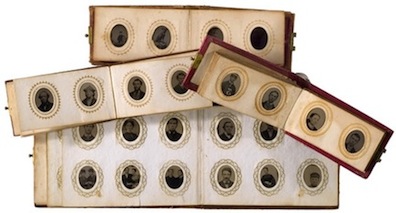The reading for this thread is chapter 8 (Gelatin silver prints) and 27 (black light) in textbook in the textbook (free pdf version here or purchase hard copy here).
* * * *
Black lights are cheap, easy to use and have a plethora of uses. An old website for some of its many uses is at http://www.cycleback.com/blacklight/
A problem with gelatin silver prints is, while albumen prints are almost exclusively from the the 1800s (which means if you identify something as a albumen print you can be near certain it is form the 1800s), gelatin silver prints have been made from the turn of the century to today. This means, identifying something as a gelatin silver print means it could be have been made at any time over a long duration.
Luckily, there are various qualities that help you pinpoint an era, including the following:
Stamping helps date photos. This will be covered more later, but news service, studio and photography stamps help date photos to an era. Some photos even have a date stamp date that pinpoints a date. Photos also can have paper tags or stickers that help point time. If you are familiar with the different types of stamps, you can be confident in ages.
Many early early gelatin silver photos have silvering, which is a very strong sign of old age. If an otherwise seemingly old photo has silvering and a crystal clear image, it is more than likely original.
If a photo has a matte finish (as opposed to the normal glossy finish), the silvering might not be obvious or be there. Also, silvering is as apparent in photos that are underdeveloped.
Below is a video showing silvering:
Early gelatin silver photos are on thin paper, well dried out and often brittle. The paper generally got thicker over time.
A majority, probably over 90 percent, of photos made after the mid 1950s glows brightly under a blacklight. A simple way to definitively identify modern reprints.
Photos with on resin coated paper (plasticy, smooth backs) are from the late 1960s and after. An earlier photo should have a papery back. An easy way to identify modern reprints.
The tone of the backs is generally a good way to judge age. In general (with exceptions), the older the photo the more off-white the back should be. The back of a 1990s photos should be much whiter than the back of a 1950s photo. The back of a 1920s-30s photos will be even dark still. There will be variations due to how photos are stored, so it’s not an exact science but a good rule. Snow white backs are almost often modern, because modern photo paper is often bleached.
Without any stamping, it can be difficult to pinpoint the date of a photo with, say, a 1940s image. It may be difficult to impossible to be sure whether that photo was printed in the 1940s or 50s. However, if you are a collector, you can find many photo with definitive stamps and tags that show the age.
There will always be photos where you aren’t sure of the age. However, between silvering, stamping and other paper qualities, there will be many antique photos where you will be certain they are antique and original. Silvering, in particular, is a near sure sign a photo is antique. Most photos from the 1900s-20s will have silvering, so most should be easy to identify as antique. It’s for unstamped photos from the 1940s-60s where it can be more difficult. However, again, many 1940s to 60s photos have stamps or tags that will give a date or era.
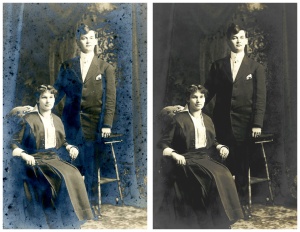
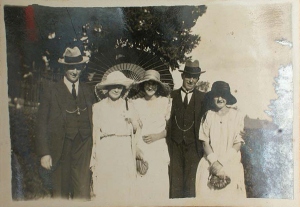

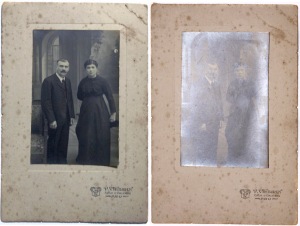
* * * *
The back tone is a good guage of general age. The below shows the back of (left to right) photos from 1945, 1979 and 2004. The 1945 is clearly more toned and off white, and even the 2004 is whiter than the 1979. And these are all post war photos. A 1915 would be even darker.
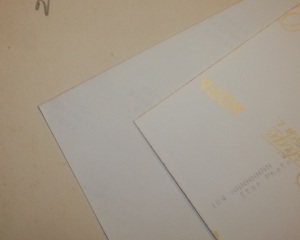
It’s to do the back tone directly, by placing one photo on top of the other. On it’s own, the degree of toning/off-white may not be obvious, but with direct comparison (as above) it’s clear.
In modern times, they started bleaching the paper during manufacturer, which makes it snow white.
Also note that the right two photos have resin coated (plasticy smooth) backs and fluoresce brightly under blacklight, so are identified as modern in multiple ways.
* * * *
Homework Questions for Assignment #3
10) In general, will a 1905 gelatin-silver print be thinner or thicker than a 1980 gelatin-silver print?
11) What is silvering and what does it indicate about a photograph’s age?
12) What is resin coated photopaper and when was it introduced?
* * * *
Course Assignments:
